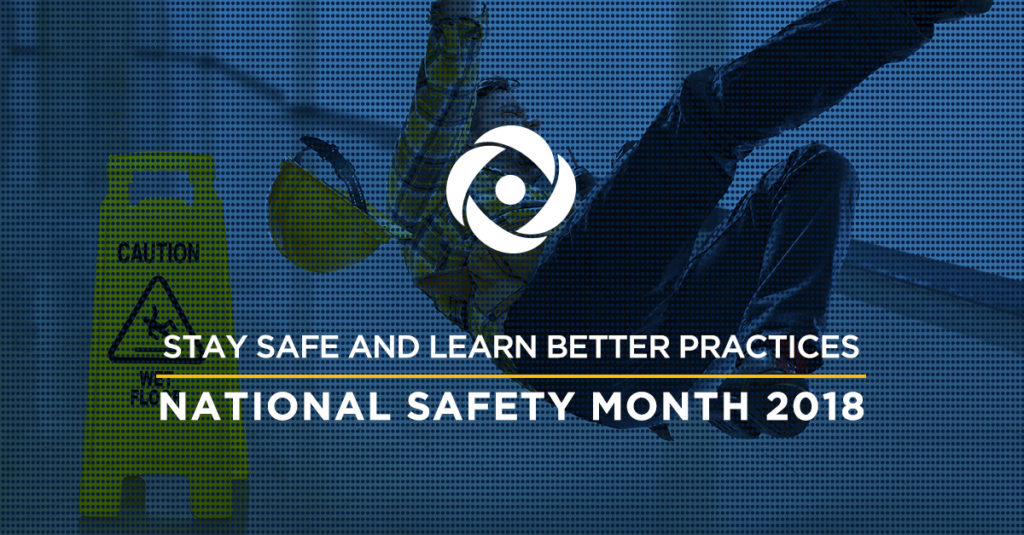
Learn Better Practices for Staying Safe: June is National Safety Month
Safety should remain a top concern in the workplace, on roads, within our homes, and in the community. According to the Bureau of Labor Statistics, 5,190 people—more than 14 a day—died while doing their jobs in 2016. And for every worker lost, countless others are affected.
Many workplace deaths are preventable. The National Safety Council has designated June as National Safety Month to educate and promote better practices and safer environments. To continue the safety dialogue throughout the month, the NSC has highlighted a weekly topic throughout the month of June:
Week 1: Emergency Preparedness
Week 2: Wellness
Week 3: Falls
Week 4: Driving
The NSC offers several reasons to consider more safety features in the workplace. In addition to the goal of fewer workplace injuries, they stress an observable link between employers who illustrate greater care regarding employee safety with improved employee morale and increased productivity.
Safety is a persistent concern and top priority for the staffing industry as contingent workers are often placed at new and unfamiliar sites and on-site supervisors may vary in terms of the safety and training provided. It’s therefore important to empower your employees to recognize potential hazards and engage with their on-site teams about regulations and policies.
Here are two tools to help workers remain safe in their respective places of employment.
- Employee Safety Manual: Provide a comprehensive document that covers topics such as safety rules, injury prevention measures, and motorized vehicle tips. It should be required by each employee to sign and return to their supervisor which ensures that each employee has read the relevant information and can refer back to it if need be.
- Job Site Safety Evaluation: This form, to be completed by employees at all customer work sites, is a great way to remain informed as to the kind of environment employees are working in as well as to remain up to date on OSHA guidelines. It should include an exposure review, facility walk through, and safety materials overview.
A simple way to engage workers, families, and communities on the topic of safety is to utilize your creativity. Safety prioritization begins at the top with owners, managers, and supervisors, but each person can do his or her part. Consider a few suggestions from the NSC. These ideas will encourage participation and an open mind. Safety-themed games and prizes, for example, help staff retain necessary information.
- Create bulletin boards or blog posts for employees to read and notate.
- Hold a safety trivia contest with weekly prizes.
- Make an activity out of identifying hazards found where you work and live.
- Throw a safety fair or luncheon.
Think of at least one change you can make to create a stronger, safer workplace. Use one of the above strategies to make it fun and relevant for your workplace or family. The NSC’s tagline reads, No 1 Gets Hurt, a simple reminder to eliminate preventable deaths through committed leadership, adequate research, comprehensive education, and sincere advocacy.




